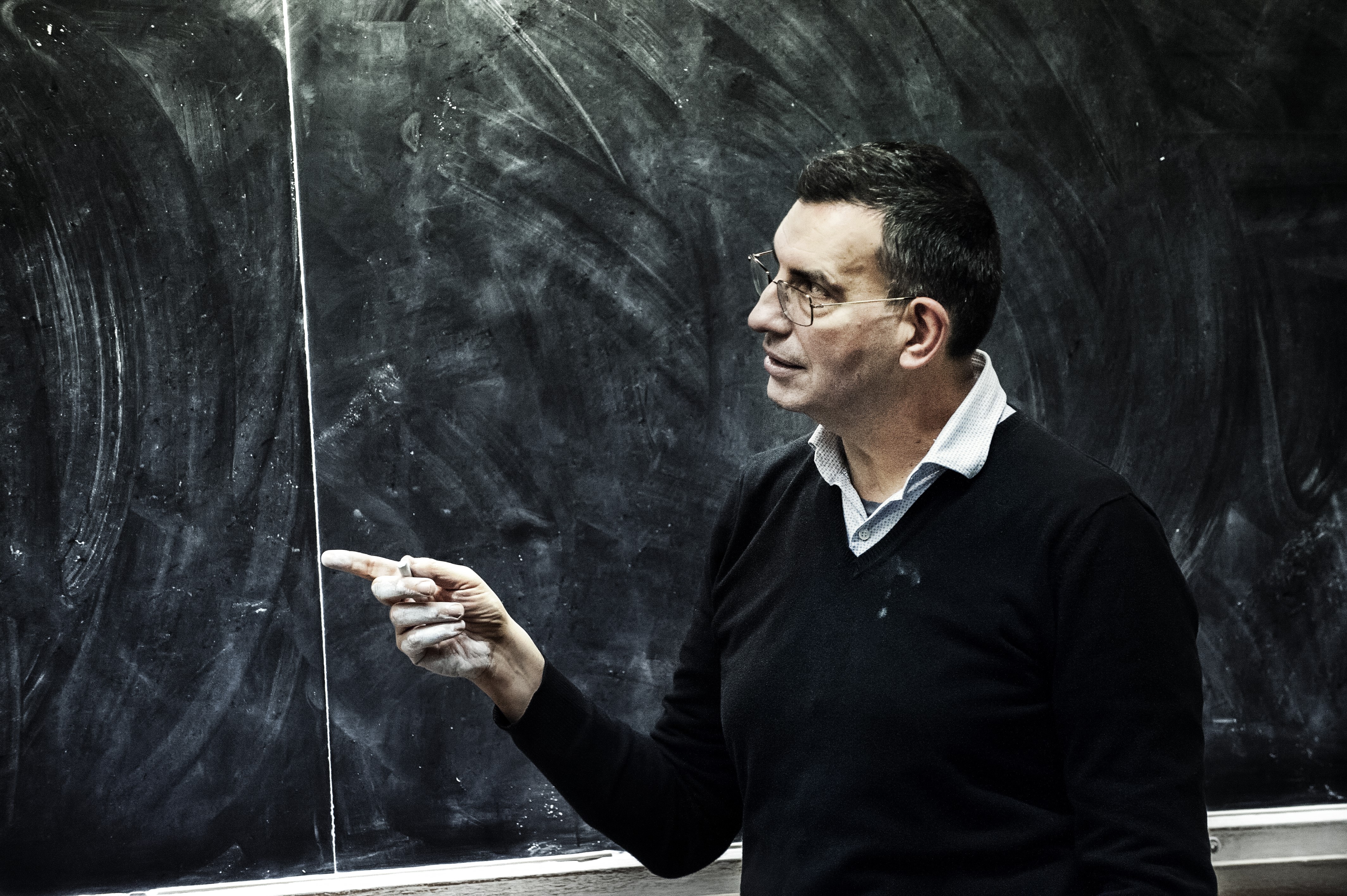Calculus of Variations & Geometric Measure Theory
Aula magna ex Presidenza facoltà di Scienze
Pisa
Invited Speakers:
Speakers:
Giovanni Alberti (Università di Pisa)
Andrea Braides (Università degli Studi di Roma Tor Vergata)
Yann Brenier (École normale supérieure Paris)
Giuseppe Buttazzo (Università di Pisa)
Xavier Cabré (ICREA and Universitat Politècnica de Catalunya)
Piermarco Cannarsa (Università degli Studi di Roma Tor Vergata)
Gianni Dal Maso (SISSA Trieste)
Guido De Philippis (New York University)
Alessio Figalli (ETH Zürich)
Irene Fonseca (Carnegie Mellon University)
Massimo Fornasier (Technische Universität München)
Nicola Fusco (Università di Napoli Federico II)
Adriana Garroni (Università La Sapienza Roma)
Nicola Gigli (SISSA Trieste)
Shouhei Honda (Tohoku University)
Carlo Mantegazza (Università di Napoli Federico II)
Simon Masnou (UCBL Lyon)
Andrea Mondino (University of Oxford)
Diego Pallara (Università del Salento)
Giuseppe Savaré (Università Bocconi, Milano)
Francesco Serra Cassano (Università di Trento)
Dario Trevisan (Università di Pisa)
Organizing committee:
Matteo Focardi
Valentino Magnani
Matteo Novaga
Emanuele Paolini
Aldo Pratelli
Adolfo Arroyo Rabasa
Adriano Prade
Alberto Corella
Alberto Maione
Aldo Pratelli
Alessandra Pluda
Alessandro Carbotti
Alessandro Violini
Alireza Ataei
Allan Freitas
andrea kubin
Andrea Pitrone
Anna Chiara Zagati
Anna Kubin
Annalisa Cesaroni
Anton Ullrich
Antonio Leaci
Antonio Tarsia
Berikbol Torebek
Bianca Stroffolini
Camilla Brizzi
Camillo Brena
Carlo Alberto Antonini
Chiara Alessi
Cristian Cazacu
Cristian Mendico
Damià Torres-Latorre
David Tewodrose
Davide Carazzato
Denisa Stancu-Dumitru
Dmitry Vorotnikov
Edoardo Mainini
Emanuele Paolini
Emmanouil Milakis
Enzo Maria Merlino
Federico Buseghin
Federico Glaudo
Filippo Paiano
Filippo Quattrocchi
Francesca Bianchi
Francesca Bonadei
Francesca Corni
Francesca Oronzio
francesca prinari
Fumihiko Onoue
Giacomo Del Nin
Giacomo Enrico Sodini
Giandomenico Orlandi
Gioacchino Antonelli
Giorgio Stefani
Giovanna Andreucci
Giovanni Eugenio Comi
Giovanni Pisante
Giulia Cavagnari
Giulio Ciraolo
Giulio Pecorella
Giuseppe La Scala
Hugo Malamut
Jiri Minarcik
Joao Henrique Andrade
Kennedy Idu
Konstantinos Bessas
Lorenzo Dello Schiavo
Lorenzo Liverani
Lorenzo Portinale
Luca Benatti
Luca Lussardi
Luca Tamanini
Luciano Sciaraffia
luigi forcella
Makson Santos
Marco Di Marco
Marco Pozzetta
Maria Farcaseanu
Maria Stella Gelli
Marina Ghisi
Martino Fortuna
Massimo Gobbino
Matteo Focardi
Mauro Bonafini
Michael Novack
Michele Caselli
Mihai Mihailescu
Mojtaba Bakherad
Nicola De Nitti
Nicola Picenni
Nicolai Jork
Niyaz Tokmagambetov
Paolo De Donato
Paolo Valentini
Pasquale Ambrosio
Pêdra Andrade
Reshmi Biswas
Roberto Ognibene
Rossella Giorgio
Sami Aouaoui
Serena Guarino Lo Bianco
Sergio Conti
Shokhrukh Kholmatov
SIMONE CARANO
Stefano Buccheri
Tomasz Socha
Tommaso Bertin
Uriel Martínez León
Valentino Magnani
Xingyu Zhu
- +69
